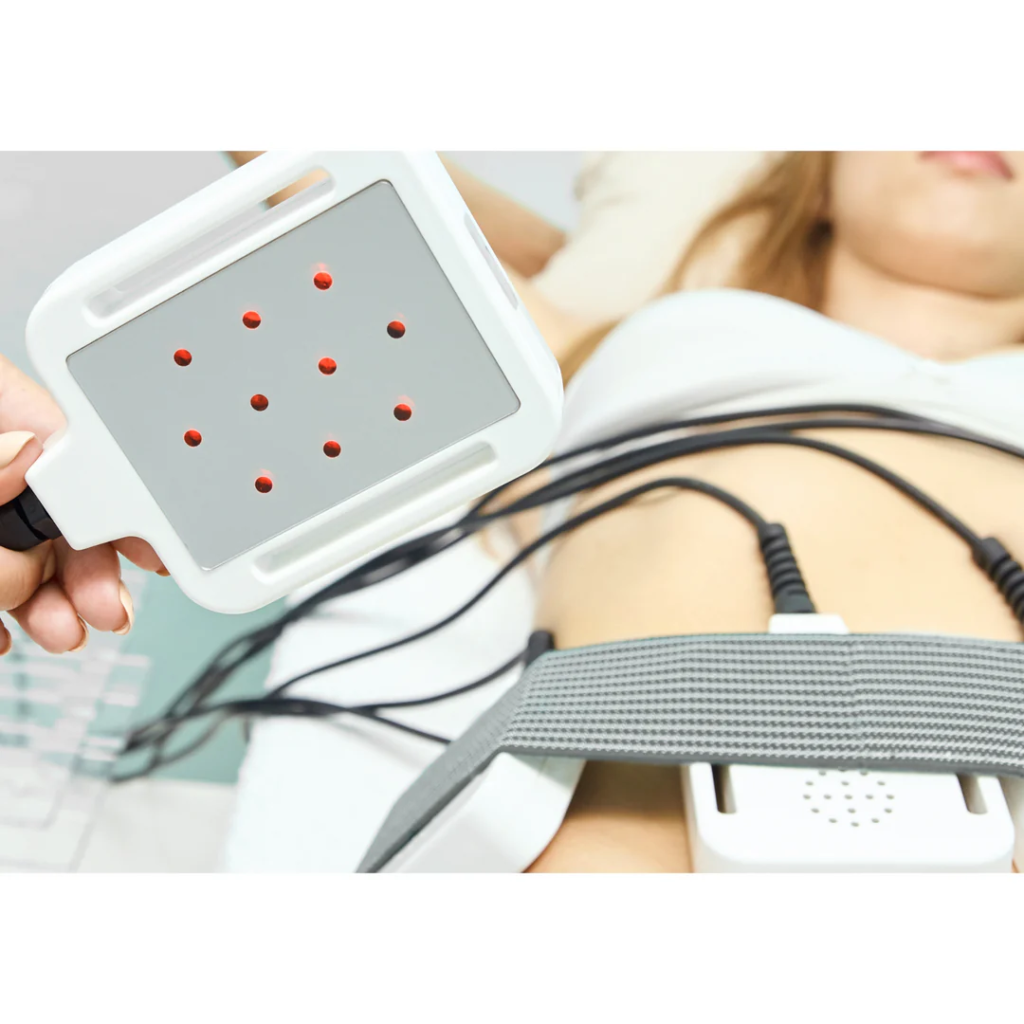Laser lipolysis is an advanced cosmetic procedure designed to target and break down fat cells, helping individuals achieve a more toned and contoured body. Unlike traditional liposuction, laser lipolysis uses a laser to melt fat, which is then naturally flushed out by the body. As a minimally invasive treatment, one of the most common concerns patients have is whether it leaves scars or marks. This article will explore this issue in depth and provide a clear understanding of what patients can expect from laser lipolysis treatments. If you’re considering Laser Lipolysis in Dubai, read on to understand how this treatment works and what results you can anticipate.
What is Laser Lipolysis?
Laser lipolysis is a non-invasive procedure that uses laser energy to target fat cells beneath the skin. A small fiber-optic laser is inserted through a tiny incision in the skin, delivering controlled heat to break down fat cells in specific areas of the body. This treatment is often used for areas like the abdomen, thighs, arms, and chin. It is especially beneficial for individuals who want to reduce localized fat deposits without undergoing more invasive procedures like traditional liposuction.
The procedure typically involves minimal downtime, and it can result in smoother, more toned skin in the treated areas. The heat from the laser also stimulates collagen production, which may improve skin texture and elasticity over time.

Does Laser Lipolysis Leave Scars?
One of the most appealing aspects of laser lipolysis is its minimal invasiveness compared to traditional liposuction. Since the procedure uses only small incisions, the risk of scarring is significantly reduced. Typically, laser lipolysis requires only one or two small punctures in the skin, through which the laser fiber is inserted. These small incisions are far smaller than the incisions required for traditional liposuction, which can leave more noticeable scars.
In most cases, these tiny incisions heal quickly and leave very minimal scarring. Any scars that do form are usually small, discrete, and barely noticeable, especially after the healing process is complete. The natural healing process of the skin helps reduce the appearance of scars, and with proper aftercare, these scars can fade over time.
For those concerned about scarring, it’s important to choose an experienced and skilled practitioner who can ensure precise placement of the incisions, reducing the likelihood of visible marks. Additionally, following the doctor’s aftercare instructions can promote faster healing and minimize the risk of scarring.
Factors That Influence Scarring
While laser lipolysis generally results in minimal scarring, several factors can influence how the skin heals and whether scars may form:
1. Skill of the Practitioner
The experience and skill of the doctor performing the procedure play a significant role in minimizing scarring. A skilled doctor will make the incisions as small and discreet as possible, which can significantly reduce the likelihood of noticeable scars.
2. Healing Process
Everyone’s skin heals differently. Factors such as age, skin type, and overall health can affect how well the skin heals after the procedure. Some individuals may have a naturally better ability to heal with minimal scarring, while others may experience slight scarring.
3. Aftercare
Proper aftercare following the procedure is crucial for ensuring that the incisions heal without forming significant scars. Doctors typically advise keeping the treated area clean and protected, avoiding excessive sun exposure, and following any specific instructions regarding ointments or creams that can aid in the healing process.
4. Location of the Incisions
The location of the incision also plays a role in scarring. Incisions made in less visible areas, such as near natural skin folds, are less likely to result in noticeable scars. Your doctor will take this into account when planning the procedure to ensure minimal visibility.
Benefits of Laser Lipolysis
Laser lipolysis offers several advantages over traditional fat reduction treatments, not just in terms of the results it provides, but also in its minimally invasive nature. Below are some of the key benefits of laser lipolysis:
1. Minimal Downtime
One of the main advantages of laser lipolysis is that it requires very little recovery time. Unlike traditional liposuction, which can involve bruising, swelling, and a longer recovery period, laser lipolysis typically allows patients to return to their normal activities within a few days.
2. Targeted Fat Removal
Laser lipolysis allows for precise fat removal, making it effective for contouring specific areas of the body. Whether it’s the stomach, thighs, or love handles, the laser can break down fat cells selectively without affecting the surrounding tissue.
3. Improved Skin Tightening
Another advantage of laser lipolysis is its ability to stimulate collagen production. As the fat is broken down, the heat from the laser also encourages the skin to tighten and firm up. This can result in smoother, more youthful-looking skin in the treated area.
4. Non-invasive
Unlike traditional liposuction, which requires large incisions and the removal of fat through suction, laser lipolysis is minimally invasive. This means there is a significantly lower risk of complications, and the procedure is generally safer with a faster recovery time.
5. Long-lasting Results
The results from laser lipolysis are long-lasting, especially if the patient maintains a healthy lifestyle. Once the fat cells are removed or damaged, they do not regenerate. This means that patients can enjoy a more contoured body for years, as long as they avoid significant weight gain.
The Laser Lipolysis Procedure
The laser lipolysis procedure is relatively simple and takes place in a medical setting, usually under local anesthesia. Here’s what you can expect during the treatment:
- Consultation: During your initial consultation, the doctor will assess your body, discuss your goals, and determine if laser lipolysis is the right treatment for you.
- Preparation: On the day of the procedure, the doctor will clean and mark the treatment areas. Local anesthesia will be administered to ensure you are comfortable during the procedure.
- Laser Application: A small incision will be made, and the laser fiber will be inserted. The laser will be used to break down the fat cells, which will then be absorbed and eliminated by the body.
- Recovery: After the procedure, you may experience mild swelling or redness in the treated areas, but these side effects typically subside within a few days. You can return to work and other normal activities shortly after treatment.
Conclusion
Laser lipolysis offers a minimally invasive and effective way to target and remove stubborn fat deposits. While the procedure does involve small incisions, the risk of scarring is minimal when performed by an experienced doctor. Proper aftercare is essential to ensure the best healing and minimize any scarring. The benefits of laser lipolysis—such as minimal downtime, targeted fat removal, and skin tightening—make it an appealing option for individuals looking to contour their body without undergoing more invasive procedures.































